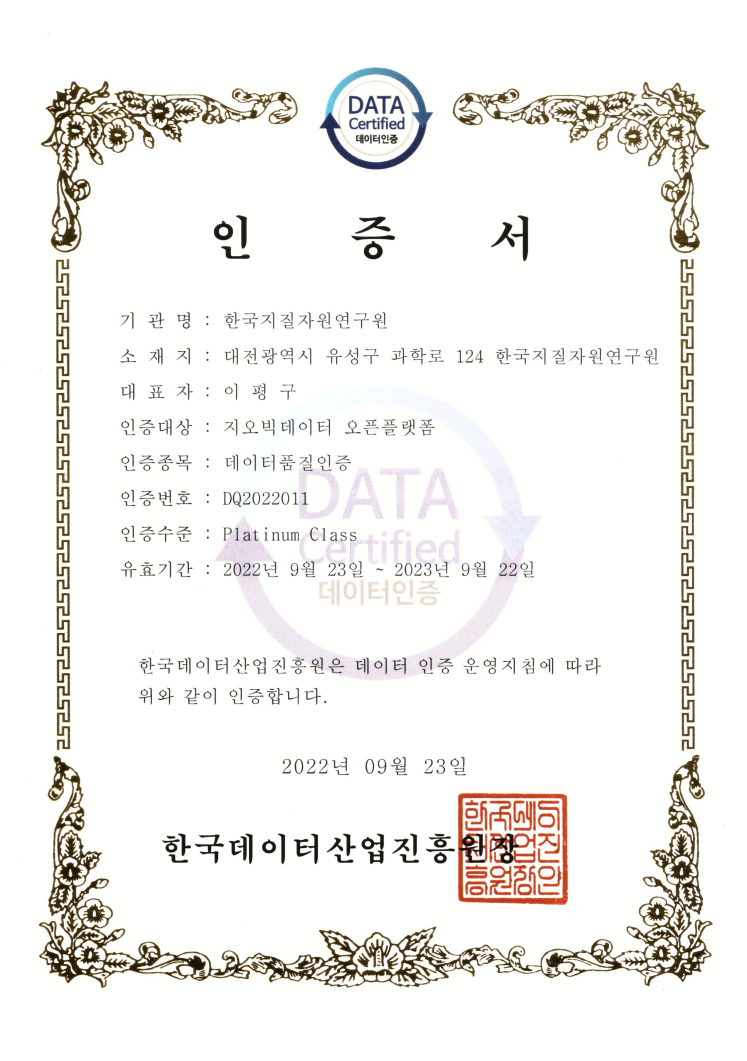경주 오도리 부채꼴 주상절리의 독특한 용암 지형
Data Quality Certification (DQC-V)

| Data type | KIGAM 보고서 |
|---|---|
| Title | 남해 제4기 층서 및 퇴적환경 연구 (1) |
| Author | 장정해 |
| Language | KOR |
| Call Number | KR-98-[B]-14-1998-R |
| Publication Information | 科學技術處, 1998 |
| Abstract | 남해 제4기 층서 및 퇴적환경 연구를 위해 남해 해역에서 얻어진 탄성파 탐사자료와 기타 기존 연구 결과를 종합하여 두 지점(SSDP-101, SSDP-102)에서 약 100미터의 교란되지 않은 주상 퇴적물 시료를 획득하였으며 그 위치는 다음과 같다. SSDP-101: 34。 19.6661'N, 128。 16.3354'E ;SSDP-102: 34。 57.1841'N, 128。 52.8676'E. SSDP-101 시추공이 위치한 남해 앞 바다 사구형 퇴적체 및 그 하부 층은 패각편을 다량 함유하는 시추 시료의 특성으로 미루어 보아 대부분이 해성 퇴적층인 것으로 판단된다. 그러나 시추심도 약 48.0m에 분포하는 니질층은 반고화된 특성과 함유된 식물뿌리 화석의 존재로 보아 대기 중 노출의 사건을 지시하고 있으며, 이는 마지막 빙하기 때의 해수면 하강을 나타내고 있는 것으로 사료된다. 따라서 소위 순차 층서학적인 관점에서 해석하면 이 니질층 부근이 최후빙하기 이후 형성된 순차층의 하부 경계면이라고 볼 수 있다. 아울러 그 상부의 토탄을 함유한 퇴적층은 후빙기 해침 초기에 형성된 것을 해석된다. 한국 남동해역에 대상으로 발달하며 니질퇴적물로 구성된 것으로 보고된 소위 낙동강 니질 퇴적대는 SSDP-102 시추공의 시추 결과에 의하여 최대 층후가 20m 이상인 것으로 확인되었다. 아울러 퇴적대 중앙에 발견되는 침식면은 그 주변에서 특별한 대기 중 노출의 증거가 보이지 않아 마지막 빙하기 대의 해수면 하강 시에 생성된 것이라기보다 후빙기 해침 과정에서 생성된 것으로 판단된다. 한편 그 하부에 분포하는 역질층은 9m 이상에 달하는 두께와 해성 화석의 부재로 보아 마지막 빙하기 대에 즈음하여 대기에 노출된 육성환경에서 퇴적된 층으로 해석된다 In order to study late Quaternary stratigraphy and depositional environmental changes in the South Sea, two deep-drill holes were located on the basis of interpretation of pre-existing high-resolution seismic profiles. The position of drill sites is as follows:SSDP-101: 34。 19.6661'N, 128。 16.3354'E ; SSDP-102: 34。 57.1841'N, 128。 52.8676'E.SSDP-101 hole was located on the top of a ridge-shaped sediment body and aims at revealing formative processes of the ridge and the lower substratum. Most core portions contain abundant shells and shell fragments, suggesting shallow-marine environments of deposition. Exceptionally, a semi-consolidated mud bed around 48.0m in penetration depth includes plant rootlets, and is immediately overlain by peat layers. These sedimentary sequences represent subaerial exposure of the paleoseafloor during the last glacial maximum (LGM) and its re-submergence after LGM. The major purpose of SSDP-102 hole is to shed light on origin and stratigraphy of the mud deposit in the southeastern part of the Korean seas, so called Nakdong-river Mud Belt. Based on core analyses, the mud deposit up to 20m thick is revealed as entirely of Holocene (post-glaciation), although it contains a laterally persistent erosional surface to have been suspected as an indicative of the last glaciation event. The lower gravelly sediments represent fluvial environments of deposition formed during the last glaciation |
| Page | 161-214 p. |
| Keyword | 남해, 제4기, 층서, 퇴적, 퇴적환경, 욕지도, 낙동강 |
| Source |
Comments